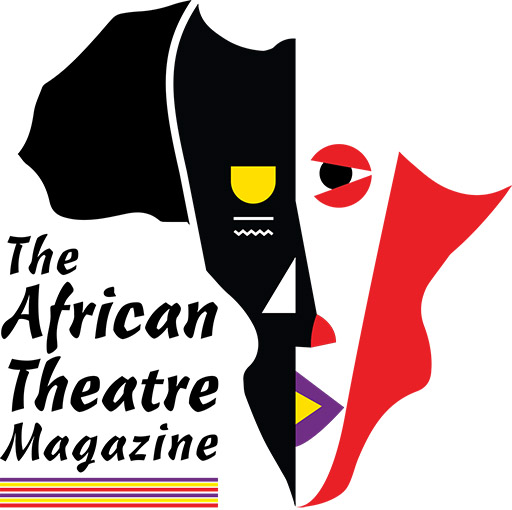Olajumoke is a dance drama created and directed by Oyindamola Adesunloye, produced by the Dance and Drama class of the Department of Theatre Arts, University of Nigeria, Nsukka. The production coordinated by Dr. Obiorah Ekwueme ran for two nights (23rd and 24th August, 2024) at the Arts Theatre of the university.
In the Igbo folklore there is no shortage of princesses (and beautiful maidens) who end up with a diabolic man or spirit after rejecting their community men, men who queue up, ready to kill, to marry them. In some variations of these tales the princess ends up dead, while in some she is saved but with a heavy toll to the community. In Olajumoke, the latter is the case.
The first thing that becomes evident to me, coming from the Igbo background, as I see this play written by a Yoruba and with a Yoruba setting, is that the story of the girl who keeps on rejecting suitors is not found only in the Igbo folklore. It exists there in the Yoruba’s and indeed in many other African folklores.
See also: Emelda Ngufor Samba: Scholar and Face of Theatre Arts in Cameroon
The stage opens to a group of children requesting of an old man to tell them stories, a request which the old man accepts, and proceeds to tell the story of the princess Olajumoke (Samuel Ona), so loved by the parents and so beautiful that men of the community compete to win her attention. Wanting only the strongest for their daughter, the king (Dibia Clinton) organises wrestling bouts for these contestants. Champions from the different bouts are then presented to Olajumoke to choose her husband from. To everyone’s surprise, she rejects them all only to follow an handsome stranger she meets at the market home, begging him to be her husband, against the better advice of her maids.
Through soulful songs and wonderful choreography punctuated with very brief dialogues, the play unfolds to the delight of the audience. The Diviner (Nwaizugbo Nita), with body movements very precise that one hears her divinations just by watching her move, explains what has happened to the princess and the need of six warriors to go rescue her from the coven, set deep in a faraway forest, where she is held hostage. Warriors (Asadu Chinonso, Okoro Chidozie, Nwachukwu Esther, Nwankwo Chinedu, Offor ThankGod, Ojochebe Emmanuel) many of whom had wrestled for the princess’ hands in marriage volunteer to go rescue the her not minding that she had previously rejected them. The scene is made more poignant when the last volunteer stands, against the cries of a close female relative who is overwhelmed by the deadly nature of the rescue mission.
See also: Brother-Brother by Cheta Igbokwe: A Quest for Long Lives Leads to Quick Deaths
The rest of the play focuses on the many challenges encountered by the warriors as they journey to rescue the princess. From a heavy storm that rocked their boat and took the lives of two of them, to the encounter of many strong men and spirits who fight and kill them at different stages. Some of the challenges were not violent. Rather, they appeared as temptations with what the warriors, tired and beaten, crave: food, water, palm wine, and even sex. The elimination continued until only one warrior remains—the initial reluctant volunteer who defeats the last spirit in a prolonged and well pronounced battle to finally rescue the princess and bring her back safely to the kingdom.

While their performance gives life to an already clichéd storyline, a lot is left to be desired in the staging of the play. The King (Dibia Clinton) never really gets into character. He simply lacks the carriage of a monarch and looks like a usurper in the royal robes. The Court Jester (Eze Kingsley) enthusiastically performs his role but that enthusiasm also becomes a problem as he sometimes is carried away, dancing out of tune and derailing from that which is at stake at a particular point in time.
The play could also have done away with unnecessary scenes that do not advance the narrative. Take for instance the opening scene with the young ones requesting to be told a story which is never returned to, as is customary in plays that open in that nature. We do not see the children asking questions about the story at the end of the play or the narrator sharing the moral lessons of the play with the children.
See also: Mariam Ndagire: A Full Career in Theatre, Music and Film
Speaking of moral lessons, the dance drama seems to be interested in teaching a few but it is quite complicated how we are to read these lessons. One can easily see that the warrior who succeeds in rescuing the princess is not the strongest amongst the six. In fact he is a hunter who never participated in the wrestling bouts over who would emerge the princess’ husband. Yet, it is this man, who at the top of the play trades with a shape-shifting spirit while one a hunt, whom the spirits of the land favour to bring back the princess with the material received from the shape-shifting spirit. The negative consequences that come from following a handsome and rich-looking man home while rejecting those selected with confidence from the community may also be, for the children to whom this story is told, a lesson on two very popular proverbs: all that glitters not being gold and known demons being more trustworthy than the unknown angels.
It gets complicated though when we try to read what it means that the princess is later married to the man, earlier defeated in the contest for who will emerge her husband. Such patriarchal portrayal of women, no matter how highly placed, as commodities to be given cannot be escaped in a dated play like this, emerging from folklores of the past, but the play makes no attempt to engage it. The viewers are left to make of it whatever they think and I know not what to make of it.
See also: Obari Gomba’s Grit and the Politics of Vendetta
Production design can be confusing at times with the costumes and makeup sometimes not appropriately conveying anything. But the Lighting design team (Mgbafulu Ifeoma, Okolo Kanasom and Ukagha Stephen) together with the Chorus were the champions of the night. Even with many of the songs being sang in Yoruba, a language which in the audience may not understand, the chorus, by how they sing, accompanied by both traditional drums and other musical instruments and modern instruments like the saxophone, were able to adequately communicate the mood in every scene. This is accentuated by the lighting, with the use of dim red lighting to illuminate eerie environments like the covens and the use of strobe lights to depict chaos during fight scenes. I will say that the crew mastered their light emitting diodes and made with them, the stage, a delight to look upon.
Olajumoke was a success especially in its ability to show that with body movements alone, a story can be told for almost two hours and the audience is not lost. Never at any point was I confused about wha was happening on stage. This is a testament to the unifying nature of songs and dance, even across languages and cultures. Oyindamola Adesunloye deserves commendation for bringing this folklore to stage and I hope lessons learnt from these productions will be incorporated in the scripting of the play and help the students to improve their performances in their theatre careers.








Discussion about this post